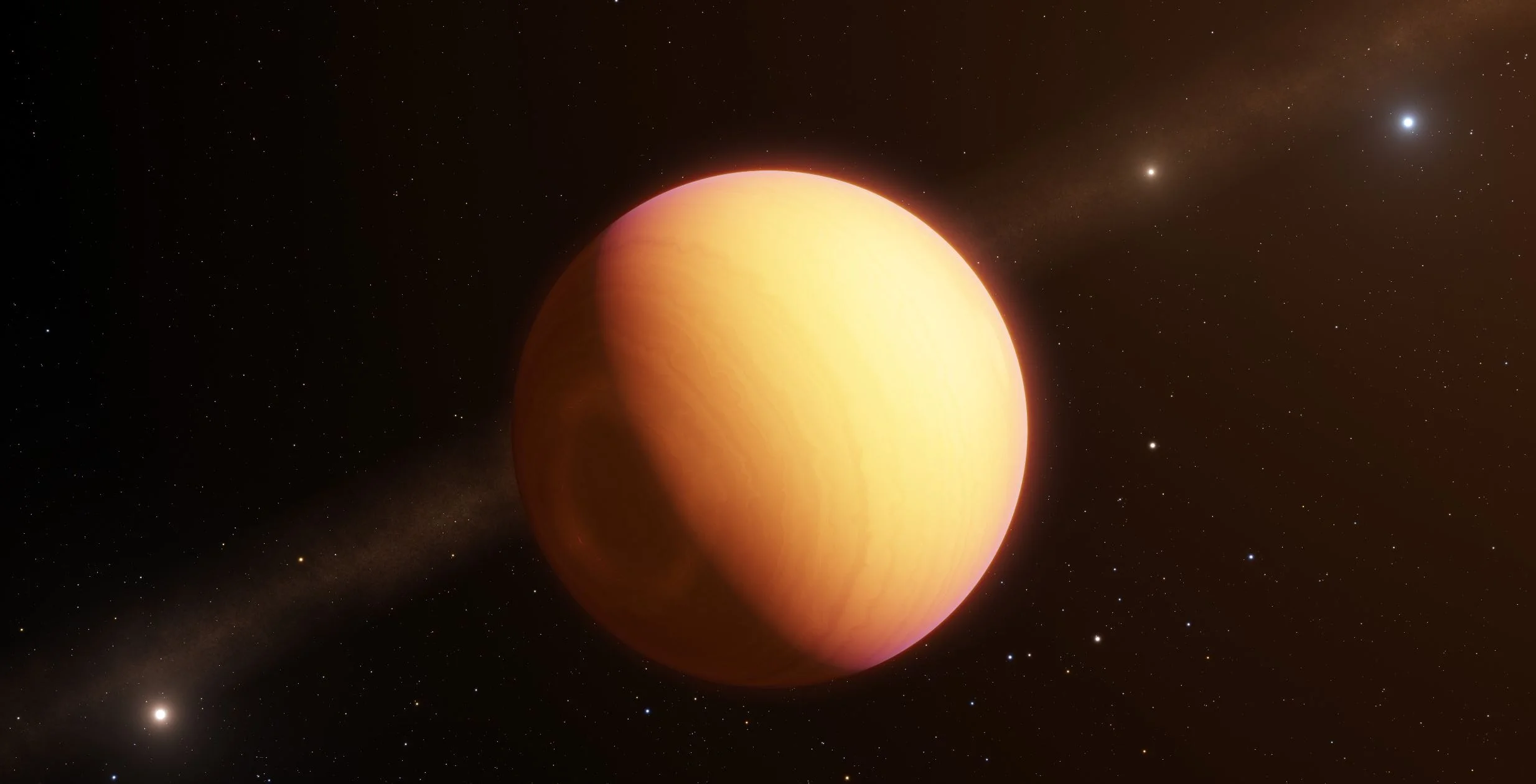Any comments, suggestions or just looking for a chat about this subject? Don't hesitate and leave a comment on our comment section down below the article!
By Evan Gough
Image Credit: ESO/L. Calçada
We’ve finally got our first optical look at an exoplanet and its atmosphere, and boy is it a strange place. The planet is called HR8799e, and its atmosphere is a complex one. HR8799e is in the grips of a global storm, dominated by swirling clouds of iron and silicates.
Thanks to the Kepler spacecraft, we’ve discovered a lot of exoplanets and exoplanet candidates in the last few years. In fact, it’s almost routine now. But we don’t know enough about them. We can determine a mass range for them and also their likely composition and density, but their atmospheric characteristics are hidden from us.
But that is starting to change.
We can thank the European Southern Observatory (ESO) for this look at a distant exoplanet. They used their GRAVITY instrument on their Very Large Telescope Interferometer to get the first direct observation of an exoplanet. This is not an actual image of the planet, but an optical spectrum of the atmosphere, and one that’s much more detailed than anything we’ve seen previously.
HR8799e is a so-called “super-Jupiter” and its unlike any planet in our Solar System. It’s a gas giant about 5 to 10 times as massive as Jupiter, orbiting a star about 129 light years away. If it was in our Solar System, its orbit would be between Saturn and Uranus. It’s also a young planet, at only about 30 million years old. And HR8799e is still very hot.
The planet is basically a hot, young, baby, and scientists think it could open a window into the formation of planets and solar systems. It’s a hostile place, as far as life goes. It’s still hot from when it was formed, and it has a powerful greenhouse effect. It’s a lethal 1000 degrees Celsius.
But its habitability, or non-habitability, isn’t what’s important here.
“This paints a picture of a dynamic atmosphere of a giant exoplanet at birth, undergoing complex physical and chemical processes.”
Sylvestre Lacour, researcher at the Observatoire de Paris and the Max Planck Institute for Extraterrestrial Physics.
This is the first time we’ve learned so much detail about an exoplanet, and it’s all thanks to the VLT’s Interferometer and the attached GRAVITY instrument. The image is ten times as detailed as any earlier observations, which allowed astronomers to discover some surprises.
The detailed spectrum of HR8799e showed that the atmosphere contains clouds of iron and silicate dust. It also contains more carbon monoxide than methane, which is puzzling.
“Our analysis showed that HR8799e has an atmosphere containing far more carbon monoxide than methane — something not expected from equilibrium chemistry,” explains team leader Sylvestre Lacour researcher CNRS at the Observatoire de Paris – PSL and the Max Planck Institute for Extraterrestrial Physics. “We can best explain this surprising result with high vertical winds within the atmosphere preventing the carbon monoxide from reacting with hydrogen to form methane.”
What Lacour is saying is that expected chemical reactions involving carbon monoxide and methane are not occurring as expected, and that as a result the atmosphere is not in equilibrium. He posits that high vertical winds are preventing the two from mixing and reacting.
The clouds of iron and silicate dust are puzzling as well. According to a press release, the iron and silicate, combined with the high levels of carbon monoxide, suggest that HR8799e’s atmosphere is embroiled in a powerful storm.
Overall, the exoplanet is revealed as a very young planet with a complex atmosphere that is undergoing a lot of changes, and is nowhere near any kind of stable state.
“Our observations suggest a ball of gas illuminated from the interior, with rays of warm light swirling through stormy patches of dark clouds,” elaborates Lacour. “Convection moves around the clouds of silicate and iron particles, which disaggregate and rain down into the interior. This paints a picture of a dynamic atmosphere of a giant exoplanet at birth, undergoing complex physical and chemical processes.”
This is an intriguing result for the ESO, the VLT-I, and for GRAVITY. GRAVITY is already responsible for some other ground-breaking work, including its observation of gas swirling around a black hole at 30% the speed of light.
Hopefully they’ll be using it to image more exoplanets. And soon.
Source: Universe Today
If you enjoy our selection of content please consider following Universal-Sci on social media:

















